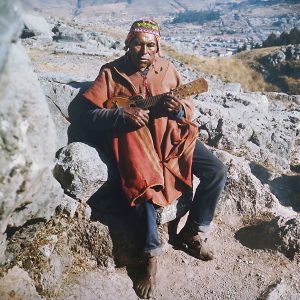
Photo courtesy of Roy C. Craven
GAINESVILLE, Fla. — Visitors can learn about how people with roots in pre-Hispanic cultures from South and Central America express their identities through clothing designs and materials that echo their community’s past in a new exhibit opening May 7 at the Florida Museum of Natural History.
“Crafting Ethnic Identity in the Andes and Mesoamerica: Highlights from the Doughty Folk Art Collection” features authentic hand-crafted items, including heirlooms dating to the late 1800s, and offers a glimpse into the mid-20th-century lifestyles of indigenous people.
Compiled over a period of more than 30 years, the Doughty collection was recently donated to the Florida Museum. This exhibit reflects the many years Paul and Polly Doughty spent living and traveling in Latin America, where they participated in community development projects, first in Mexico, El Salvador and Guatemala in the 1950s and later in the highlands of Peru.
“Its interest to students and members of the public is the intimate glimpse it gives us into life in another time and place — one that seems very different from ours in many ways but also has unexpected connections that draw us in,” said Florida Museum guest curator Gabrielle Vail.
Prior to the arrival of Europeans, the Inka in the Andes and the Aztecs in Mexico embarked on campaigns of expansion for political and commercial reasons. The actions of these two empires echo those undertaken by the Spanish a century later, leading to their conquest of the Andes and Mesoamerica in the 16th century.
People living in these regions were introduced to a new language and a host of religious and cultural changes. “Crafting Ethnic Identity” reveals the profound impact of a cultural blend between past and present civilizations in these remote regions.
The Doughtys will give a brief presentation with details on how the collection was assembled May 7 at 2 p.m. followed by a gallery tour of the exhibit. The event is free and open to the public on a first-come, first-serve basis.
For more information, visit www.floridamuseum.ufl.edu/craftingidentity.
-30-
Writer: Maria Espinoza, printern@flmnh.ufl.edu
Sources: Gabrielle Vail, gvail@ncf.edu
Media contact: Paul Ramey, 352-273-2054, pramey@flmnh.ufl.edu